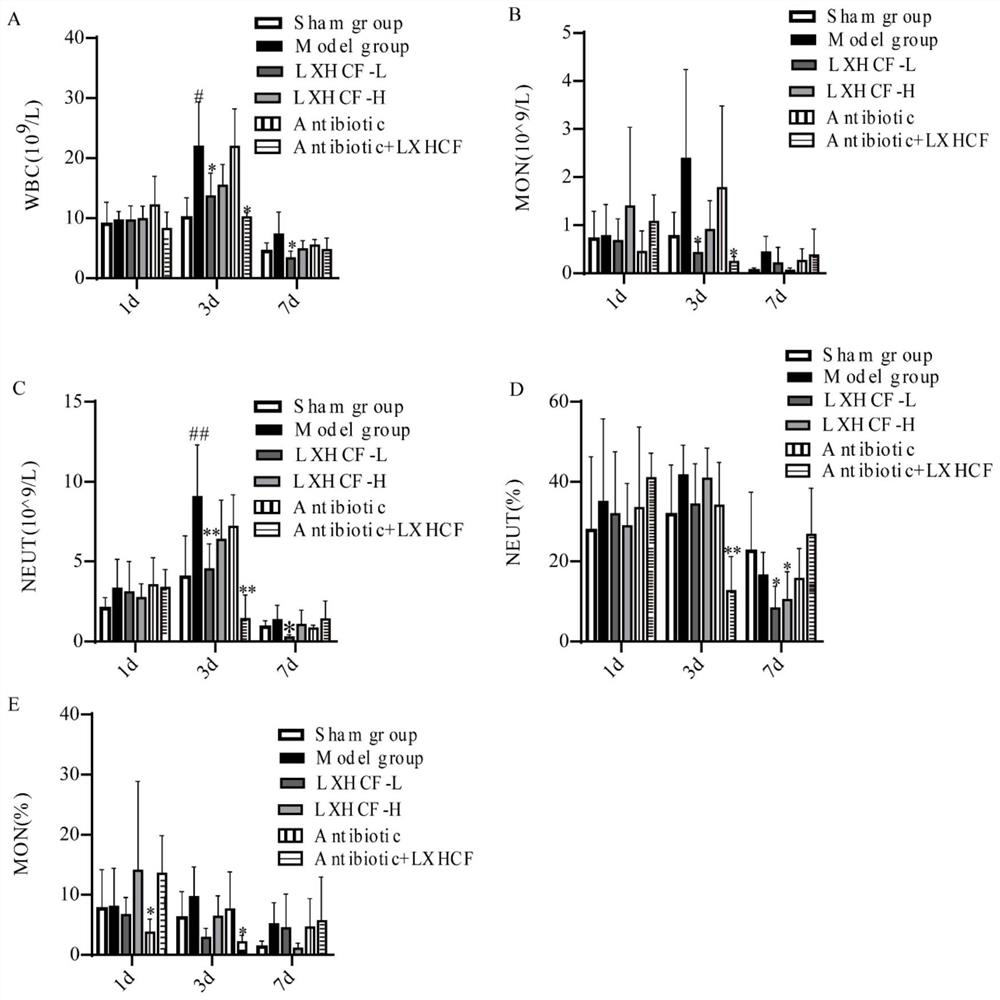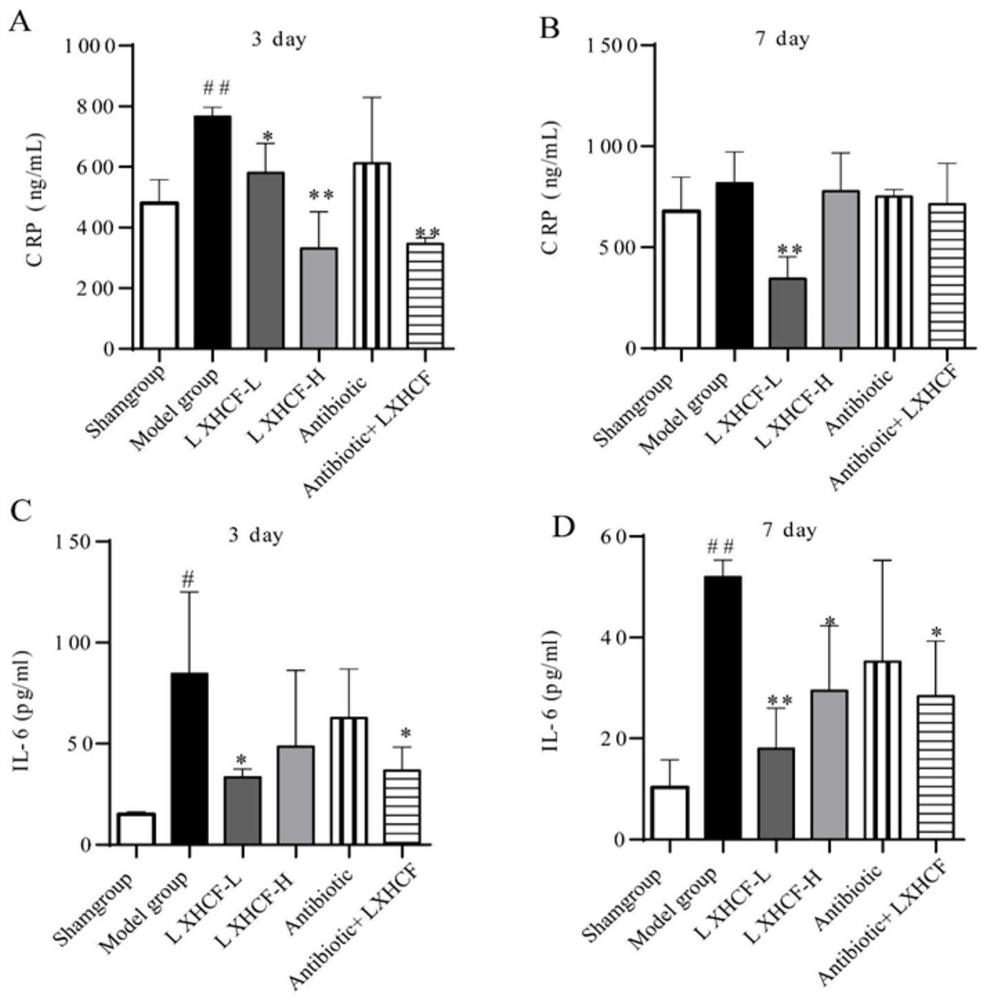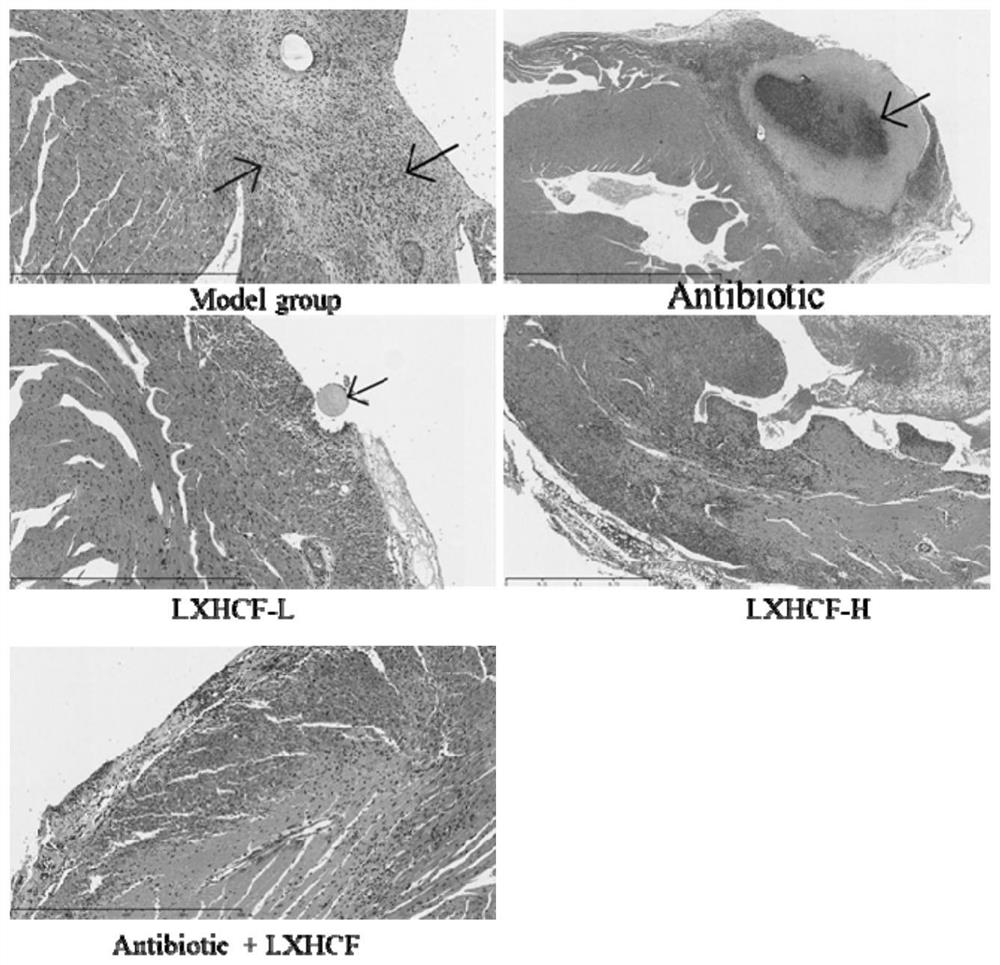Traditional Chinese medicine composition for treating systemic inflammatory response after cardiac surgery
A post-surgical and drug technology, applied in the field of medicine and biology, can solve problems such as inaccessibility of beneficial substances and brain complications, and achieve the effects of relieving systemic inflammatory response, improving prognosis, and improving postoperative prognosis.
- Summary
- Abstract
- Description
- Claims
- Application Information
AI Technical Summary
Problems solved by technology
Method used
Image
Examples
Embodiment 1
[0076] Example 1. LXHCF treatment can significantly reduce the inflammatory response caused by AMI in model mice
[0077] One day after AMI modeling, WBC, MON, NEUT, MON%, NEUT% of each group
[0078] There was no significant change in the total number of white blood cells (WBC), the total number of monocytes (MON), the total number of neutrophils (NEUT), the percentage of monocytes (MON%) and the percentage of neutrophils (NEUT%).
[0079] The results of testing 3 days after surgery showed:
[0080] (1) Compared with the sham operation group, the content of WBC, MON and NEUT in the model mice increased significantly (P<0.05, 0.01).
[0081] (2) Compared with the model group, LXHCF-L significantly reduced WBC, MON, NEUT, and MON% of the model mice after surgery (P<0.05, 0.01), and the reduction rates were 37.8%, 82.5%, 50.3%, and 70.6%, respectively. ;
[0082] (3) The antibiotic group had no significant effect on WBC, MON, NEUT, MON% and NEUT% of the model mice;
[0083] ...
Embodiment 2
[0088] Example 2. LXHCF treatment can significantly reduce the expression of CRP and IL-6 in AMI model mice
[0089] Three days after the operation, the CRP and IL-6 levels of the mice in each group were detected according to the aforementioned methods. The results showed that:
[0090] (1) Compared with the sham operation group, the plasma CRP of the mice in the model group was significantly increased (P<0.01);
[0091] (2) Compared with the model group, the antibiotic group had no significant effect on the CRP level of the model mice,
[0092] (3) LXHCF-H, LXHCF-L, antibiotics + LXHCF significantly decreased the level of plasma CRP in model mice (P<0.05, 0.01).
[0093] 7 days after the operation, further tests were carried out, and the results showed that,
[0094] (1) Compared with the sham operation group, there was no significant difference in CRP in the model group;
[0095] (2) Compared with the model group, LXHCF-L still significantly reduced the plasma CRP level o...
Embodiment 3
[0097] Example 3. After administration of LXHCF, the pathological state of myocardial tissue in AMI model mice was significantly improved
[0098] After the administration, in order to further observe the improving effect of LXHCF on myocardial histopathology, the heart tissue was stained with H&E according to the aforementioned method. The results show,
[0099] (1) The model group showed focal degeneration and necrosis of the myocardium, myocardial atrophy, rupture, accompanied by inflammatory cell infiltration, fibroblast proliferation and early myocardial fibrosis;
[0100] (2) Focal degeneration and necrosis of the myocardium in the antibiotic group, myocardial atrophy, rupture, and infiltration of inflammatory cells, but no significant improvement;
[0101] (3) LXHCF-H, LXHCF-L, Antibiotic+LXHCF attenuates cardiac inflammatory response to different degrees, reduces inflammatory cell infiltration, and improves histopathological abnormalities in model mice.
PUM
 Login to View More
Login to View More Abstract
Description
Claims
Application Information
 Login to View More
Login to View More - R&D
- Intellectual Property
- Life Sciences
- Materials
- Tech Scout
- Unparalleled Data Quality
- Higher Quality Content
- 60% Fewer Hallucinations
Browse by: Latest US Patents, China's latest patents, Technical Efficacy Thesaurus, Application Domain, Technology Topic, Popular Technical Reports.
© 2025 PatSnap. All rights reserved.Legal|Privacy policy|Modern Slavery Act Transparency Statement|Sitemap|About US| Contact US: help@patsnap.com



